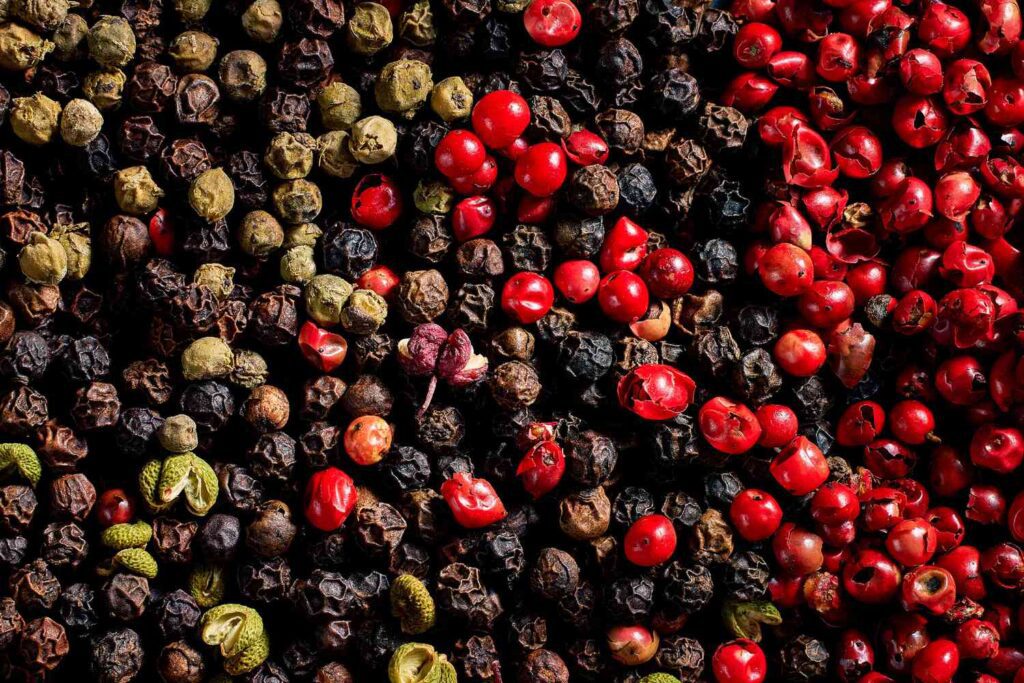Peppers, ranging from sweet bell peppers to fiery habaneros, are versatile ingredients that enhance culinary dishes while providing significant health benefits. This guide categorizes peppers into sweet and hot types, detailing their nutritional profiles. For instance, bell peppers are rich in vitamin C, while jalapeños and serranos offer moderate heat and additional health perks. Peppers are essential in recipes like salsas, stuffed dishes, stir-fries, and marinades. Packed with antioxidants, they support immune function, promote weight loss, and boost eye health. Understanding and utilizing the diverse flavors and nutritional advantages of peppers can significantly elevate cooking endeavors.
The Power of Peppers: A Guide to Heat and Flavor in Cooking
Peppers, with their vibrant colors and diverse flavors, are among the most versatile ingredients in the culinary world. From the mild sweetness of bell peppers to the intense heat found in jalapeños and habaneros, these fruits not only invigorate dishes but also offer an array of health benefits. This comprehensive guide will explore the various types of peppers, their nutritional profiles, and how to harness their unique flavors and heat in your cooking.
The Different Types of Peppers
Peppers can be broadly categorized into two main groups: sweet peppers and hot peppers.
Sweet Peppers
-
Bell Peppers
- Heat Level: 0 Scoville Heat Units (SHU)
- Nutritional Value (per 100g):
- Calories: 31
- Carbohydrates: 6g
- Protein: 1g
- Fat: 0.3g
- Vitamin C: 130% of the Daily Value (DV)
- Vitamin A: 42% of the DV
- Fiber: 2.1g
Bell peppers, available in colors like green, red, yellow, and orange, are known for their crisp texture and mild flavor. They thrive in salads, stir-fries, and as a versatile ingredient in numerous dishes. Beyond enhancing the visual appeal of a plate, they are rich in vitamin C and antioxidants, promoting immune health.
-
Pimiento
- Heat Level: 100-500 SHU
- Nutritional Value (per 100g):
- Calories: 50
- Carbohydrates: 10g
- Protein: 1g
- Fat: 0.4g
- Vitamin C: 25% of the DV
- Fiber: 1.2g
These red, heart-shaped peppers are often found in stuffed olives or as pimiento cheese spread. Their sweet flavor and tender texture make them a delightful addition to a variety of dishes.
Hot Peppers
-
Jalapeños
- Heat Level: 2,500-8,000 SHU
- Nutritional Value (per 100g):
- Calories: 29
- Carbohydrates: 6.5g
- Protein: 0.9g
- Fat: 0.2g
- Vitamin C: 148% of the DV
- Vitamin A: 8% of the DV
Jalapeños are popular in many cuisines, particularly in Mexican dishes. They offer a moderate level of heat, making them ideal for salsas, nachos, and grilled items. The capsaicin in jalapeños can boost metabolism and provide anti-inflammatory properties.
-
Serrano Peppers
- Heat Level: 2,500-5,000 SHU
- Nutritional Value (per 100g):
- Calories: 32
- Carbohydrates: 7g
- Protein: 1.2g
- Fat: 0.3g
- Vitamin C: 136% of the DV
Smaller and spicier than jalapeños, serranos are commonly used in fresh salsas and sauces. Their bright, crisp flavor adds a kick to dishes while providing beneficial vitamins and minerals.
-
Habaneros
- Heat Level: 100,000-350,000 SHU
- Nutritional Value (per 100g):
- Calories: 40
- Carbohydrates: 8g
- Protein: 1.2g
- Fat: 0.4g
- Vitamin C: 300% of the DV
Renowned for their fiery heat, habaneros add an extraordinary punch to sauces and marinades. Besides adding flavor, these peppers are rich in vitamins, particularly vitamin C, which supports a healthy immune system.
Culinary Uses of Peppers
1. Salsas and Sauces
Peppers are foundational ingredients in many salsas and sauces. The balance of sweet and hot peppers allows cooks to create a flavor profile that appeals to any palate. Pairing different types of peppers, such as using bell peppers for sweetness and jalapeños for a kick, can elevate any dip or dressing.
2. Stuffed Peppers
Stuffed peppers are a popular dish that can make use of both sweet and hot varieties. Bell peppers can be stuffed with rice, meat, or vegetables, offering a satisfying meal that is colorful and nutritious. On the other hand, spicy peppers can be filled with cheese or grains to create a delectable dish for the adventurous eater.
3. Stir-Fries and Curries
In Asian cuisines, various peppers are used to add depth to stir-fries and curries. Whether you’re seeking a simple vegetable stir-fry or a complex curry, the addition of sliced or diced peppers can enhance flavor and provide texture.
4. Marinades and Pickles
Adding hot peppers to marinades can intensify the flavor of meats and vegetables. They can also be pickled for a tangy addition to sandwiches or salads, providing both crunch and heat.
Nutritional Benefits of Peppers
Peppers are not only flavorful but also come packed with numerous nutritional benefits. Some noteworthy health benefits of incorporating peppers into your diet include:
- Rich in Antioxidants: Peppers contain various antioxidants, including carotenoids and flavonoids, known to protect the body from oxidative stress and inflammation.
- Boost Immune Function: High levels of vitamin C in peppers can significantly enhance your immune system.
- Promote Weight Loss: Capsaicin, the compound responsible for the heat in hot peppers, has been shown to boost metabolism and fat burning.
- Eye Health: The lutein and zeaxanthin present in bell peppers can help maintain healthy vision.
Conclusion
The world of peppers is vast and exciting, offering a spectrum of flavors and heat levels that can transform any dish. By understanding the different types of peppers and their nutritional values, home cooks and aspiring chefs alike can expertly incorporate these vibrant ingredients into their culinary repertoire. Whether you’re seeking to spice up your meal or enhance flavor through their natural sweetness, the power of peppers is undeniable. Embrace their potential in your cooking and enjoy the health benefits they have to offer.
